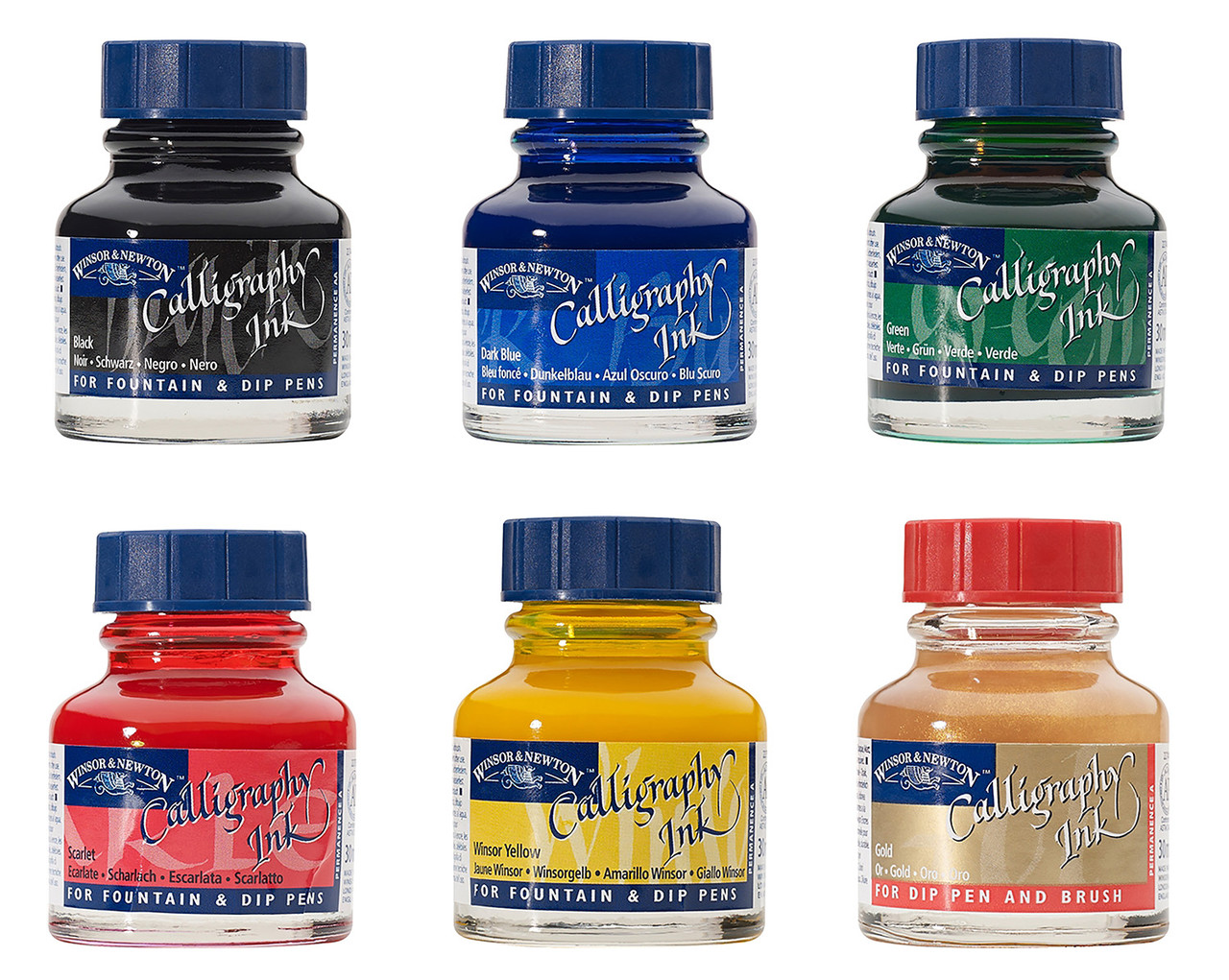
You are new to the fountain pen hobby and are ready to get started with all of that pretty ink. You are on the lookout for shading and sheening, for just the perfect color of yellow to match your fountain pen, and you see a bunch of ink at the craft store, but hold off buying the first "ink" you see, as not all ink is safe for your new hobby.
It's essential to understand that calligraphy ink is different from fountain pen ink. There are a few differences between calligraphy and fountain ink, but the important ones are pigment size and the color binders used. Calligraphy ink is typically made with pigments that are thicker than those found in fountain pen ink and they are made with binders that are harsh or difficult to clean. These properties are not an issue when using dip pens, as is common with calligraphers, but they are not at all ideal when using fountain pens.
Using calligraphy ink in a fountain pen can clog the feed and nib. The thicker consistency of the ink makes it challenging to flow smoothly through the feed's intricate channels, leading to clogs and poor ink flow. Over time, the build-up of ink, and gunk, can damage the feed and nib, which would then be required to be repaired or replaced.
It's not made for fountain pens
Shellac, a common binder found in calligraphy ink, can also damage fountain pens. It is commonly used as a wood finish, and praised for the hard lacquer surface it produces. Shellac is waterproof when it dries and if it hardens in your fountain pen it will clog the pen's feed and nib. Normally shellac cleans up with denatured alcohol, acetone, or ammoniated detergent, all of which are harsh chemicals and would damage your fountain pen.
India ink is another type of ink that should not be used in fountain pens. India ink is made with a combination of pigments, binders, and water. Similar to shellac, the binders in India ink can cause clogs and damage to fountain pens. India ink is also waterproof when it dries, but won't dissolve with harsh cleaners as shellac does, so it's permanently gunky with no way to clean the pen.
Take good care of your pens
Instead of using calligraphy ink or India ink, fountain pen users should stick to using fountain pen ink. Fountain pen ink is designed specifically for fountain pens and contains the right consistency and viscosity to ensure smooth ink flow through the pen. Don't feel bad that you have to avoid calligraphy ink, there are still thousands of different inks available that are safe for fountain pens. Sticking to fountain pen ink ensures that your fountain pen is usable for years of writing.
